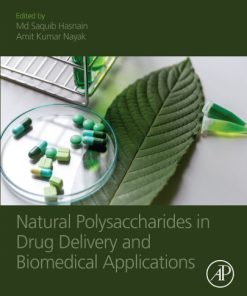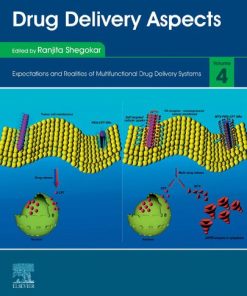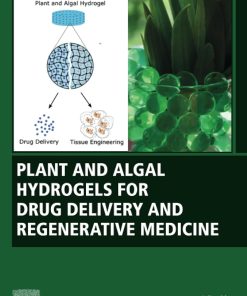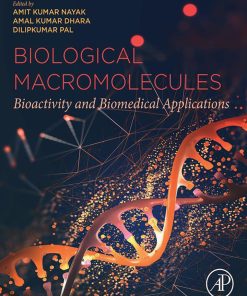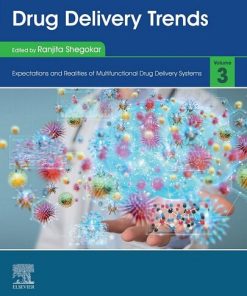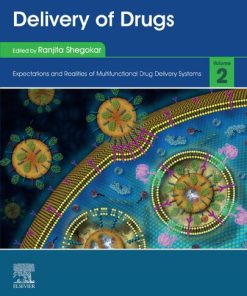Applications of Nanovesicular Drug Delivery 1st edition by Amit Kumar Nayak, Saquib Hasnain, Tejraj Aminabhavi, Vladimir Torchilin 0323919531 9780323919531
$50.00 Original price was: $50.00.$25.00Current price is: $25.00.
Applications of Nanovesicular Drug Delivery 1st edition by Amit Kumar Nayak, Md Saquib Hasnain, Tejraj Aminabhavi, Vladimir P. Torchilin – Ebook PDF Instant Download/DeliveryISBN: 0323919531, 9780323919531
Full download Applications of Nanovesicular Drug Delivery 1st edition after payment.
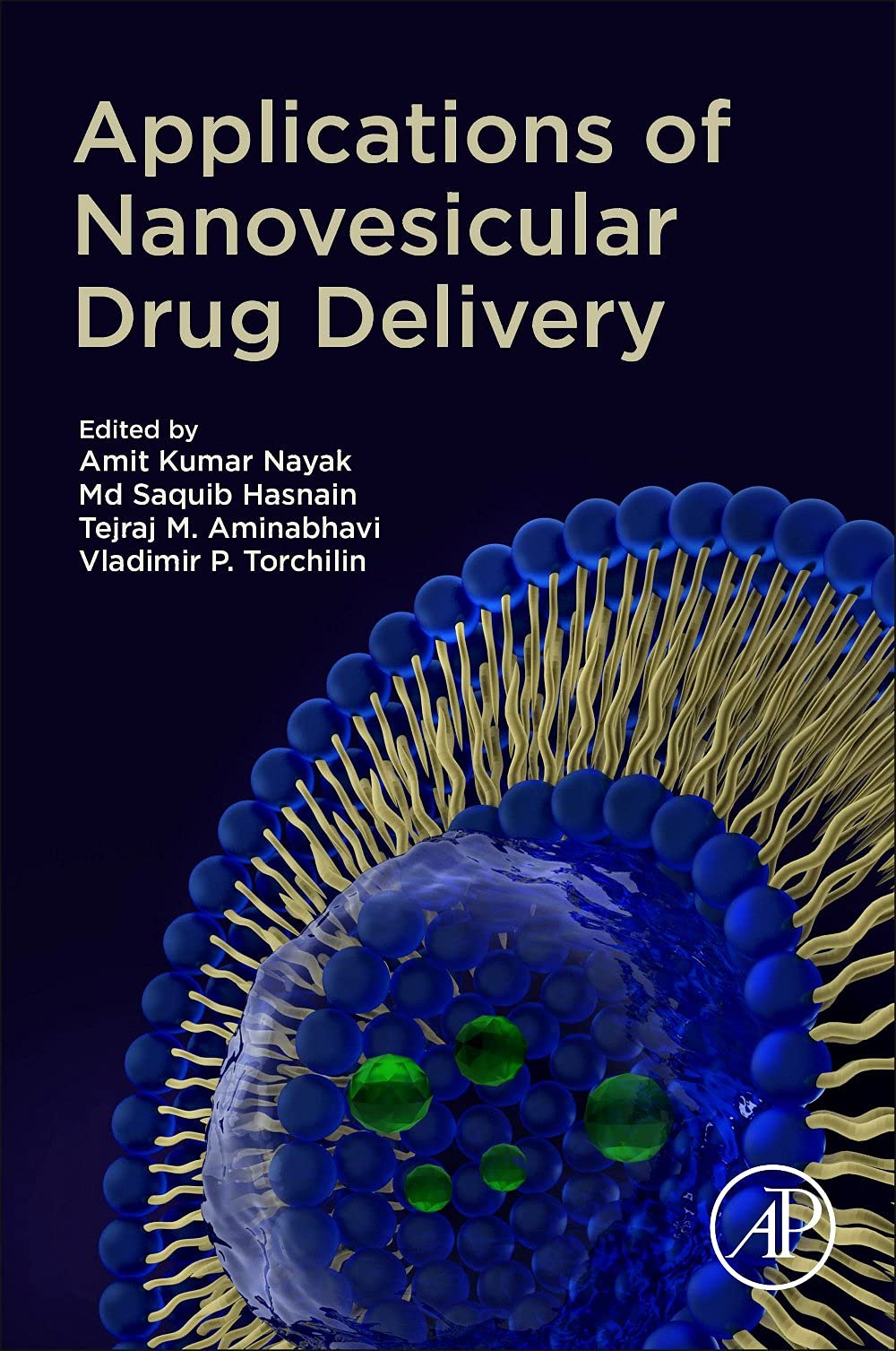
Product details:
ISBN-10 : 0323919531
ISBN-13 : 9780323919531
Author: Amit Kumar Nayak, Md Saquib Hasnain, Tejraj Aminabhavi, Vladimir P. Torchilin
Applications of Nanovesicular Drug Delivery provides thorough insights and a complete and updated discussion on the preparation, properties and drug delivery applications of various nanovesicles. This volume will discuss target-specific drug application, such as ocular, transdermal, nasal, intravenous and oral delivery. This title is a valuable resource for academics, pharmaceutical scientists, including industrial pharmacists and analytical scientists, health care professionals and regulatory scientists actively involved in pharmaceutical products and process development of tailored-made polysaccharides in drug delivery applications.
Recently, there have been a number of outstanding nanosystems in nanovesicular carrier-forms (such as nanoemulsions, self-nanoemulsifying systems, nanoliposomes, nanotransferosomes, etc.), that have been researched and developed for efficient drug delivery by many formulators, researchers and scientists. However, no previously published books have covered all these drug delivery nanovesicles collectively in a single resource.
Applications of Nanovesicular Drug Delivery 1st Table of contents:
Chapter 1. Targeting cellular and molecular mechanisms of nanovesicular systems for the treatment of different diseases
Abstract
1.1 Introduction
1.2 Lipid nanovesicular systems
1.3 Polymer nanovesicular systems
1.4 Conclusions
References
Chapter 2. Nanovesicles for drug codelivery
Abstract
2.1 Introduction
2.2 Combination drug therapy
2.3 General overview of nanovesicles
2.4 Design and preparation techniques of codelivery nanovesicles
2.5 Nanodrug codelivery systems
2.6 Conclusion
References
Chapter 3. Theranostic nanovesicles
Abstract
3.1 Introduction
3.2 Imaging strategies
3.3 Different nanovesicles used as theranostic system
3.4 Conclusion
References
Chapter 4. Nanovesicles for ocular drug delivery
Abstract
4.1 Introduction
4.2 Physiology, routes of drug administration and ocular barriers for drug penetration
4.3 Ocular diseases
4.4 Nanovesicles for ocular drug delivery
4.5 Conclusions and future perspectives
Acknowledgments and funding
References
Chapter 5. Nanovesicles for nasal drug delivery
Abstract
5.1 Introduction
5.2 Intranasal drug delivery system
5.3 Dosage forms and absorption enhancers
5.4 Benefits of intranasal drug delivery
5.5 Barriers in nasal distribution
5.6 Need for intranasal drug delivery system
5.7 Anatomy and physiology of nasal route
5.8 Mechanism of absorption of drugs via nasal route
5.9 Nasal devices
5.10 Role of nanotechnology intranasal drug delivery
5.11 Nanovesicles for intranasal drug delivery
5.12 Applications of nanovesicular intranasal delivery system
5.13 Conclusion
References
Chapter 6. Nanovesicles for transdermal drug delivery
Abstract
6.1 Introduction
6.2 Lipid-based vesicular nanostructures for transdermal drug delivery
6.3 Nanovesicles formed by nonlipid building blocks
6.4 Conclusion and future perspective
References
Chapter 7. Nanovesicles for intravenous drug delivery
Abstract
7.1 Introduction
7.2 Intravenous drug administration
7.3 Nanovesicular systems
7.4 Intravenous nanovesicles for imaging
7.5 Intraveneous nanovesicles for therapy
7.6 Intravenous nanovesicles for gene therapy
7.7 Intravenous nanovesicles for theranostic
7.8 Conclusion
References
Chapter 8. Nanovesicles for target specific drug delivery
Abstract
8.1 Introduction
8.2 Liposomes as drug delivery vesicles
8.3 Polymeric micelles as drug delivery vehicles
8.4 Exosomes as drug delivery vesicles
8.5 Niosomes—drug delivery vesicles
8.6 New era of vesicular drug delivery systems
8.7 Conclusions
References
Chapter 9. Blood–brain barrier and nanovesicles for brain-targeting drug delivery
Abstract
9.1 Introduction
9.2 Neurovascular unit
9.3 Issues with the targeted therapy of brain diseases
9.4 Nanoscale brain-targeting delivery systems
9.5 Nanovesicles
9.6 Concluding remarks
References
Chapter 10. Nanovesicles for hepatic-targeted drug delivery
Abstract
10.1 Introduction
10.2 Nanovesicular systems for drug delivery to liver
10.3 Mechanism of nanovesicles-targeted delivery
10.4 Role in improving the drug distribution and pharmacokinetic parameters
10.5 Applications
10.6 Conclusion
References
Chapter 11. Nanovesicles for tumor-targeted drug delivery
Abstract
11.1 Introduction
11.2 Nanovesicles
11.3 Targeting mechanisms of nanovesicles for tumor
11.4 Nanovesicles for tumor imaging
11.5 Nanovesicles for tumor treatment
11.6 Nanovesicles for theranostic approach
11.7 Conclusion
References
Chapter 12. Tumor microenvironment-responsive nanovesicular drug delivery systems
Abstract
12.1 Introduction
12.2 Conclusion
References
Chapter 13. Nanovesicles for colon-targeted drug delivery
Abstract
13.1 Introduction
13.2 Factors affecting colonic drug delivery
13.3 Advantages and limitations of colon-targeted drug delivery systems
13.4 Application of nanocarriers other than nanovesicles for colon-targeted drug delivery
13.5 Applications of nanovesicles for the treatment of colonic disease
13.6 Applications of nanovesicles in the detection of colonic disease
13.7 Conclusion and future prospects
References
Chapter 14. Nanovesicles for delivery of anticancer drugs
Abstract
14.1 Introduction
14.2 Classification and development of the nanovesicles
14.3 Applications of the nanovesicles for the delivery of anticancer drugs
14.4 Conclusion and future prospects
References
Chapter 15. Nanovesicles for the treatment of skin disorders
Abstract
15.1 Introduction
15.2 Types of nanovesicles
15.3 Skin disorders
15.4 Conclusion
References
Chapter 16. Nanovesicles for the delivery of nonsteroidal anti-inflammatory drugs
Abstract
16.1 Introduction of nonsteroidal anti-inflammatory drug
16.2 Nonsteroidal anti-inflammatory agents
16.3 Nanotechnology and nonsteroidal anti-inflammatory drugs delivery
16.4 Liposomes
16.5 Nonliposomal lipid-based nanovesicles
16.6 Methods of preparation
16.7 Novel preparation methods
16.8 Conclusion
References
Chapter 17. Nanovesicles for delivery of central nervous system drugs
Abstract
17.1 Introduction
17.2 Nanovesicles
17.3 Categories of nanovesicles
17.4 Nanovesicles for central nervous system disorders
17.5 Current challenges and future prospects
17.6 Conclusion
Conflicts of interest
References
Chapter 18. Nanovesicles for the delivery of cardiovascular drugs
Abstract
18.1 Introduction
18.2 A primer of cardiovascular diseases
18.3 Nanovesicles for the delivery of cardiovascular drugs
18.4 Future outlook
Acknowledgments
References
Chapter 19. Nanovesicles for the delivery of antibiotics
Abstract
19.1 Introduction
19.2 Nanovesicles as potential antibiotic drug delivery and/or targeting systems
19.3 Nanoparticle bacterial resistance
19.4 Antimicrobial resistance mechanisms
19.5 The impact of nanoparticles on microbial strength
19.6 Using numerous ways to combat microorganisms at the same time
19.7 Assisting in the transport of antibiotics
19.8 Negative side: as a drug resistance promoter
19.9 Nanoparticles antibacterial application
19.10 Dressings of wound
19.11 Bone fortification
19.12 Dental equipment
19.13 The mechanism for drug delivery
19.14 Types of nanovesicles used for the drug delivery
19.15 Efficiency of different nanovesicles for drug delivery system
19.16 Role of nanovesicles in the delivery of antibiotics
19.17 Summary and future perspectives
Acknowledgment
Disclosure statement
References
Chapter 20. Nanovesicles for delivery of antifungal drugs
Abstract
20.1 Introduction
20.2 Vesicular delivery systems
20.3 Conclusion
References
Chapter 21. Nanovesicles in antiviral drug delivery
Abstract
21.1 Introduction
21.2 What are nanovesicles?
21.3 Composition of nanovesicles
21.4 Development of nanovesicles
21.5 Nanovesicles characterization
21.6 Application of nanovesicles
21.7 Antiviral drugs
21.8 Medical applications of antiviral drugs
21.9 Designing of antiviral drugs
21.10 Approved antiviral drugs
21.11 Nanovesicles in antiviral drug delivery
21.12 Conclusion
References
Further reading
Chapter 22. Nanovesicles for targeting autoimmune diseases
Abstract
22.1 Introduction
22.2 Sources of extracellular nanovesicles
22.3 Biological functions
22.4 Immune system response to generic nanovesicles
22.5 Nanovesicle production, cellular communication, and autoimmunity
22.6 Nanovesicles and autoimmune diseases
22.7 Nanovesicle-facilitated autoimmune disease treatment therapies
22.8 Modifications for the targeted delivery of extracellular nanovesicles
22.9 Utilization of nanovesicles in autoimmune clinical trials
22.10 Conclusion and future outlook
References
Chapter 23. Nanovesicular systems for protein and peptide delivery
Abstract
23.1 Introduction
23.2 Liposomes
23.3 Polymersomes
23.4 Exosomes
23.5 Nonionic vesicles (niosomes)
23.6 Organic–inorganic hybrid nanovesicles
23.7 Conclusions
References
Chapter 24. Nanovesicles for the delivery of siRNA
Abstract
24.1 Introduction
24.2 Preparation of nanovesicles and small interfering RNA-loaded nanovesicles
24.3 Some applications of nanovesicles for the delivery of small interfering RNA in target cells/drug delivery
24.4 Conclusion
References
Chapter 25. Clinical trials of nanovesicles for drug delivery applications
Abstract
25.1 Introduction
25.2 The legal framework for clinical trials
25.3 Regulatory challenges in clinical trials in the field of nanovesicles
25.4 Liposomes
25.5 Peptide-based nanovesicles
25.6 Exosomes
25.7 Phytosomes
25.8 Niosomes
25.9 Conclusions
People also search for Applications of Nanovesicular Drug Delivery 1st:
applications of polymers in drug delivery
application of transdermal drug delivery system
applications of intrauterine drug delivery system
nanocapsules for drug delivery
applications of nanoparticles in drug delivery
Tags: Applications, Nanovesicular, Drug Delivery, Amit Kumar Nayak, Saquib Hasnain, Tejraj Aminabhavi, Vladimir Torchilin
You may also like…
Medicine - Molecular Medicine
Natural polysaccharides in drug delivery and biomedical applications 1st Edition
Technique - Nanotechnology
Biology and other natural sciences - Biotechnology
Emerging Applications of Carbon Nanotubes in Drug and Gene Delivery
Business & Economics




